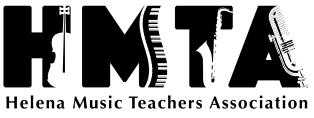
John Dorr, RPT, member and past HMTA president, percussion and piano teacher working in the Helena, Montana, area posed a question to The Piano Technicians Journal and generated some interesting responses.
Tone Production by the Pianist
by John Granholm, RPT, Piano Technicians Journal Associate Editor
Piano Technicians Journal
November, 2007, Vol. 50 No. 11, pages 10-13
©Piano Technicians Guild, 2007 (used by permission)
John Dorr, Montana Chapter
Assuming constant playing volume, can different pianists create different tones on the same piano using different touch techniques? It seems to me that the player always throws the same weight at the same target and doesn't have a direct connection with the string at the moment of impact, so different players would therefore have no control over the tone generated by the instrument, unless they could somehow control the checking point of the hammer so that it influenced a very small part of the acoustics. Shouldn't my mezzo-forte middle C sound exactly like Chick Corea's on the same instrument?
I ask because I have a piano teacher friend who insists that she and her students are ultimately in control of tone; but when I asked her to demonstrate, she couldn't. She just played louder or softer. Sure, the tone changed with the volume, but she couldn't prove to me that she's capable of producing tone change at constant volumes. She held her ground, though, and said, "Well, I can't do it right now, but sometimes when I play I can make it sound so beautiful." Then she went on to say that it was connected somehow with the "love" she put into the keys. I responded that I thought perhaps it had more to do with her emotional attachment to the music.
It's really a simple question, isn't it? Does a pianist have the ability to influence tone character at a constant dynamic level? If so, can anyone explain how that happens?
Doug Knabe
You are both correct. Your piano teacher friend is right?the pianist is in charge of tone. However, this does not mean that the pianist can change the physical tone production of the piano. The pianist must be in touch with the different tones that the instrument produces at various volumes and degrees of sustain and must adjust her input on the piano via her hands to select the best tone for a particular passage being played. This is sensitivity on the part of the pianist. That's the "love" part. From the pianist's perspective, she is changing the tone.
I have heard the same piece played on the same piano in the same day by different pianists. Some instinctively understand what is coming from the instrument and know how it can be used to relate the music. Others cannot, and will get inappropriate sound out of the same instrument because they bang through at the wrong volume.
The tone is inherent to the individual instrument, like an artist's palette, and the pianist can either use what's available to good effect, or fail to. A good artist can do amazing things with a limited palette, producing subjective impact that a poor artist can't come close to with a rainbow.
Ron Nossaman, RPT
I think Doug's got it here. Good pianists calibrate their technique and dynamics to the specific piano, on the specific day, at the specific time, to get the most from what the piano has to offer at that moment. Some are better at it than others. Some may not even realize that they are doing this, while others most certainly do, and don't consider it strange at all. Some require some time at the specific piano to work this out, but some frightening souls can do it in real time, coming to an unfamiliar instrument and calibrating on the fly in moments, seemingly effortlessly. I don't much like the notion that the pianist is controlling the piano's tone, because she isn't. She's using what's there. The tone is inherent to the individual instrument, like an artist's palette, and the pianist can either use what's available to good effect, or fail to. A good artist can do amazing things with a limited palette, producing subjective impact that a poor artist can't come close to with a rainbow.
Israel Stein, RPT
There are two additional factors one must consider when discussing piano tone production:
- Speed of pianist's hand when key is struck. That will make a huge amount of difference in what type of blow the hammer will deliver to the string and how quickly the hammer will bounce off the string, both of which will affect tone.
- Articulation. Essentially, how long a pianist's finger lingers on the key for each individual note in a passage.
That affects how soon the notes are damped, and therefore:
- You get a different length of decay time. Character of the sound changes during decay, and the pianist controls this by deciding how much decay to allow each note he or she plays.
- You get a different relationship between the notes being played, which makes all the difference in the world as to how the sound of the entire passage is perceived by the listener.
These are just a couple of the more obvious factors controlled by the pianist, affecting tone and perception of tone. I'm sure there are others.
Don Mannino, RPT
This is an interesting topic to me, as I have experienced this effect very decisively under different circumstances When I was in college studying music, I used to feel that piano tone could not be changed by how one played, but over time I have come to the opposite conclusion. The first effective demonstration was at a piano competition, on piano selection day. All of the piano technicians nervously sit in the audience while the competitors move from piano to piano and decide in the space of 20 or 30 minutes which piano to use. So in a short time I could hear multiple pianists play the same five pianos, and wow, do the pianos sound different with different pianists! The effect is not at all subtle—a particular piano can sound horrible with one player, and then the next player will make it sound wonderful.
One pianist can make a very fine piano sound thin and harsh and short-toned, while the next can make it sound warm and lush and singing.
Some of this is not simply how each key is pressed. How the pedal is used, how the notes are connected for legato play, and how chords are voiced all make a tremendous difference in the tone, and all are simple to explain. There are more differences in the overall tone quality, though, that come from the playing of the key itself. One pianist can make a very fine piano sound thin and harsh and short-toned, while the next can make it sound warm and lush and singing.
When tuning, you will find this happening, especially in the mid-to upper treble. When measuring a piano using Cybertuner®, for instance, it is sometimes possible to find a particular style of key playing that produces a clearer tone with better sustain. I can't describe how the keystroke is done, exactly, but it is firm without being hard, and it changes with different pianos.
The best explanation I have for why there are differences comes from seeing how hammer shanks flex and hammer heads vibrate on the way up to the string in slow-motion films. Given that a particular hammer velocity should produce a given volume level from the piano, how the hammer is accelerated to that velocity will affect the shank flex and hammer head vibration, and therefore the tone will be different. A pliable touch will accelerate the hammer slowly at first, reaching the target velocity just at let off. A hard and unyielding touch will accelerate the hammer more suddenly, causing more shank flex and more head vibration, which will affect the tone because of the way the hammer head is moving as it hits the string.
Another side of the picture is the contribution of various other noises in the action to the tone. The thump of the key at the bottom of a stroke definitely contributes to the tone quality, for instance. The vibration of the hammer head after impact produces a definite knock that we perceive as part of the piano's tone, and this is affected by the shank stiffness near the hammer head along with the glue collar size, as well as hammer-rail design, etc. A pianist who plays hard but not deep will create different noises in a particular action, so the tone will be perceived as different.
Action centers have a great effect on tone, and when considering the hammer head's movement towards the string, one can understand why. But more than simply loose or tight, the hardness of the bushing and the flex of the shank at the birdseye affect how controlled the hammer is, and any side-to-side vibration of the head.
Piano tone production is very complex in its makeup, and one can get lost trying to take into account everything that goes into it. All of these factors contribute very strongly to not only the type of tone produced by each pianist but also to how each pianist can have a particular type of action (including centers, keys, shank stiffness, hammer weight and hardness, etc.) that will work best for his or her style of play. Piano teachers rend to become especially sensitive to this, as they hear many different student on the same piano, making different tone. They may not be able to defend the idea conceptually, but they will relate to it experientially with great conviction!
Brad Smith, RPT
This is where science meets art. As technicians, we can quantify what is happening physically. As musicians and opinionated listeners, we hear and feel from a different perspective.
The difference is in the meaning of what is played and intended by the pianist and perceived by the listener. As a pianist, when I am completely engaged by the music, I could get the meaning across on the worst of pianos, but, if I'm not in the mood, it doesn't matter how good the piano is.
Ultimately, the purpose of music is the transmission of thought, emotion, and meaning from the artist to the listener. With enough intent and purpose, a great pianist can melt your heart using a spinet. Menachim Pressler can play "Mary Had a Little Lamb" and imbue it with such depth as to make you cry. A synthesizer can play Bach faster and more accurately than Glenn Gould ever did, but it would never give me the same chill down the spine.
Recognizing the connection between physical-measurable things and emotional-subjective things can be the link to really communicating with an artist or everyday customer. With that perspective, you can address the objective things that can be done, while allowing for the wide range of subjective perceptions of various pianists and listeners.

